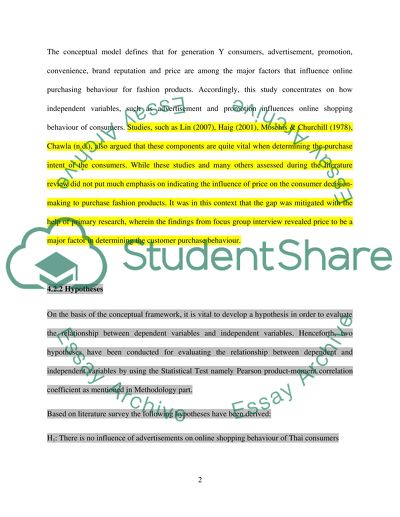Cite this document
(“A study of online shopping behaviour of Thai generation Y consumers in Essay”, n.d.)
A study of online shopping behaviour of Thai generation Y consumers in Essay. Retrieved from https://studentshare.org/marketing/1650070-a-study-of-online-shopping-behaviour-of-thai-generation-y-consumers-in-thailands-retail-fashion-industry
A study of online shopping behaviour of Thai generation Y consumers in Essay. Retrieved from https://studentshare.org/marketing/1650070-a-study-of-online-shopping-behaviour-of-thai-generation-y-consumers-in-thailands-retail-fashion-industry
(A Study of Online Shopping Behaviour of Thai Generation Y Consumers in Essay)
A Study of Online Shopping Behaviour of Thai Generation Y Consumers in Essay. https://studentshare.org/marketing/1650070-a-study-of-online-shopping-behaviour-of-thai-generation-y-consumers-in-thailands-retail-fashion-industry.
A Study of Online Shopping Behaviour of Thai Generation Y Consumers in Essay. https://studentshare.org/marketing/1650070-a-study-of-online-shopping-behaviour-of-thai-generation-y-consumers-in-thailands-retail-fashion-industry.
“A Study of Online Shopping Behaviour of Thai Generation Y Consumers in Essay”, n.d. https://studentshare.org/marketing/1650070-a-study-of-online-shopping-behaviour-of-thai-generation-y-consumers-in-thailands-retail-fashion-industry.


